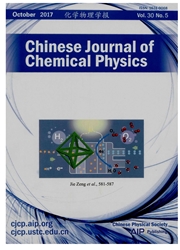

 中文摘要:
中文摘要:
建立了一套流动装置测量单晕态氧O2(1△g)在O2分子吸附的金属cu、cr、Ni和Ag表面的猝灭几率.随实验时间和O2(1△g)浓度增加,猝灭几率增加.当上述金属样品在几帕斯卡的真空度下暴露数小时后猝灭几率会回到原先水平,提出了一种基于表面吸附位上弱化学吸附的表面吸附氧分了O2(3∑g-)与气相激发态氧分子O2(1△g)之间的近其振传能机理水解释O2(1△g)在吸附气体的金属表面的猝灭,并根据实验结果提出相应的动力学模型.
 英文摘要:
英文摘要:
A flow system was set up to measure the quenching probability ~ of O2(1△g) on various O2- adsorbed metal surfaces including Cu, Cr, Ni, and Ag. increased with both the duration of the experiment and the O2(1△g) concentration. After several hours evacuation to a few Pa, γ can return to its original value. A deactivation mechanism of O2(1△g) is suggested by considering first the weak chemisorption of O2(1△g) on the surface adsorption sites, followed by the near resonant energy transfer between the gas phase O2(1△g) and surface O2(1△g). A phenomenological model in accord with the experimental fact has been proposed together with relevant kinetic equations.
 同期刊论文项目
同期刊论文项目
 同项目期刊论文
同项目期刊论文
 期刊信息
期刊信息
